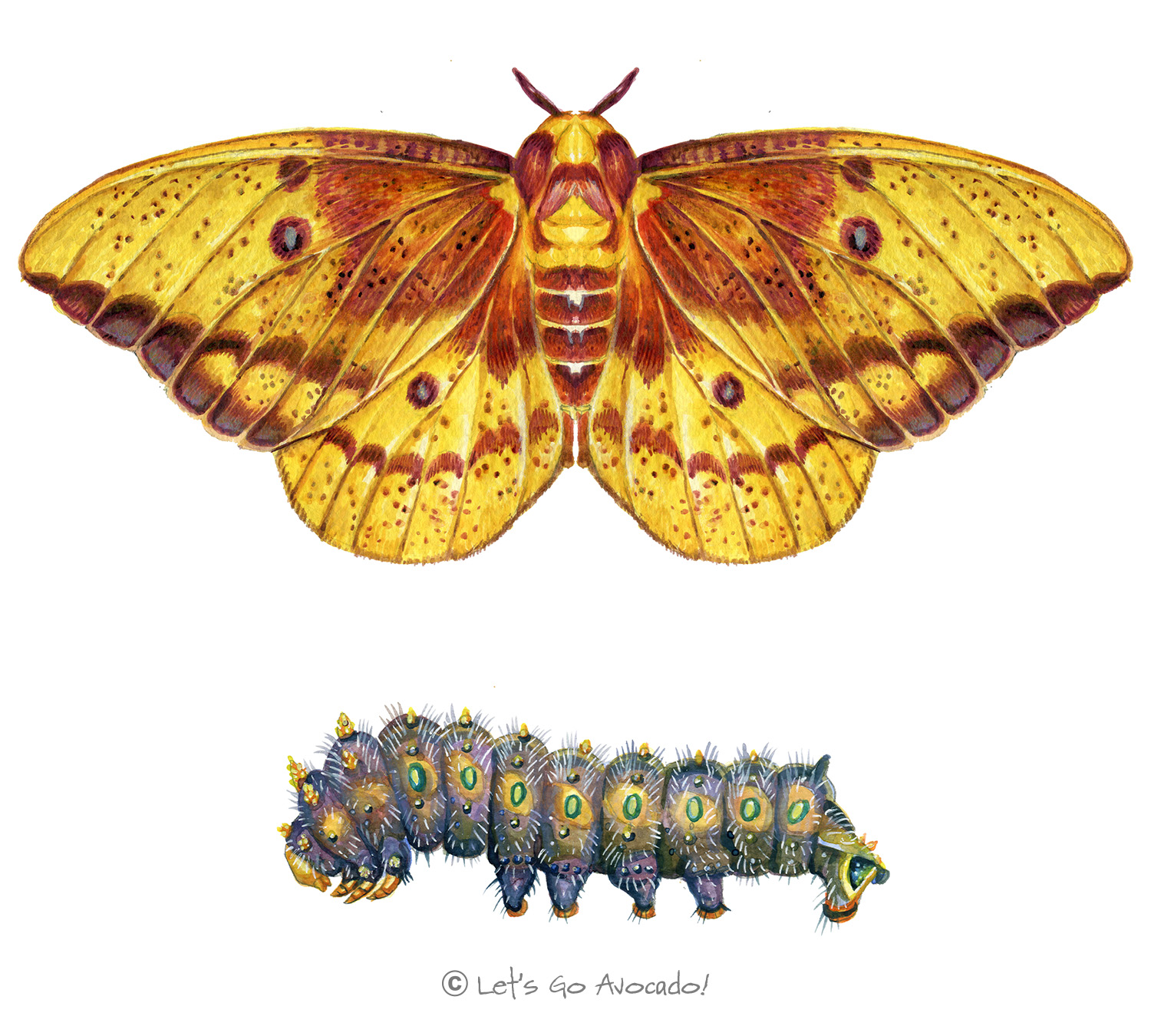

Imperial Moth
Eacles imperialis
This page may contain affiliate links.
Read our disclosure and privacy policy here.
The Imperial Moth is a strikingly large and colorful moth belonging to the Saturniidae family, known for its regal appearance and impressive size. Like other members of this family, its adult stage is short-lived and entirely devoted to reproduction.
Imperial Moth
Common Name
Imperial Moth
Latin Name
Eacles imperialis
Distribution
Found in the eastern part of North America, from southern Canada down through the eastern United States to Mexico.
Appearance
Caterpillar: The caterpillar goes through several color phases, but mature larvae are typically a greenish-yellow with blue tubercles and pinkish/red setae (hairs).
Moth (not butterfly): The adult Imperial Moth is characterized by its bright yellow coloration with pinkish, brown, or purplish spots and lines.
Size
The moth has a wingspan ranging from 8 to 17.4 cm. Caterpillars can reach up to about 10 cm in length.
Habitat
The moth can be found in deciduous forests, suburbs, and urban areas, wherever their larval host plants are available.
Diet
Caterpillar: Larvae feed on a variety of trees, including pines, oaks, maples, and sweetgums.
Moth: Adult Imperial Moths do not eat. They lack functional mouthparts and do not feed during their brief adult stage.
Lifecycle
The lifecycle of the Imperial Moth consists of the egg → caterpillar (larva) → pupa (inside an underground chamber) → adult moth sequence. Adults live for only about a week, just long enough to mate and lay eggs.
Defense Mechanisms
Caterpillar: The bright colors and spines of the caterpillar serve as warning signals, indicating that it might be toxic or unpalatable to potential predators.
Moth: The moth’s bold pattern can serve as camouflage, allowing it to blend in with leaf litter or bark.
Ecological Importance
Imperial Moths contribute to their ecosystems as pollinators (though to a lesser degree than some other moths due to their lack of feeding in the adult stage) and as a food source for various predators.
Conservation Status
The Imperial Moth is not listed as endangered or threatened. While still common in some areas, its numbers have reportedly declined in parts of its range.

There’s a lot to explore right where we are, in our own neighborhoods and backyards! Join us while we get off the couch and explore the everyday wonders of nature, science, space, engineering, art, and anything else we stumble upon during on our adventures.







